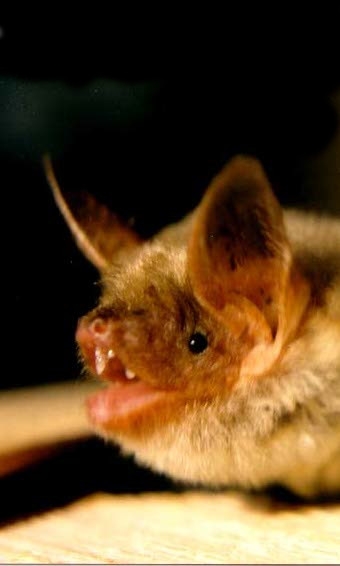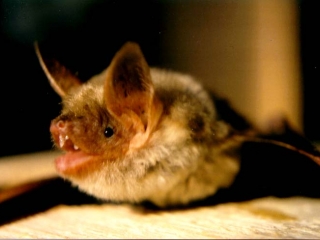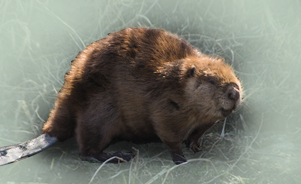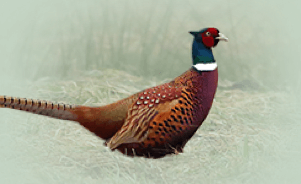The Greater Mouse-Eared Bat Myotis myotis

Features
They spend the day in their sanctuaries (underground caves, church bell towers and attics) and sleeping upside-down. They are the only mammals that fly actively. Bats are predominantly insectivorous and usually feed in forests, meadows, pastures and near water.
| Species | Mammal |
| Living space | Large caves |
| Size | 6,7 - 7,9 cm |
| Weight | 45 g |
Description
Flying is made possible by a thin elastic membrane, stretching between their long fingers, legs and tail. While flying, they look quite large, as the span of their wings exceeds 40 centimeters. Although they have developed vision, they orientate themselves by aid of hearing. They deliver high frequency calls and create a picture of the space by listening to their echoes. The highest known age of the greater mouse-eared bat is 37 years.The Greater Mouse-Eared Bat
on the habitat Temenica
The refuge of the bats is in the Lukenjska jama Cave near Prečna. Lukenjska jama is one of the more famous karst caves in Dolenjska. The cave is one of the important cave shelters for bats in Dolenjska. It functions as a summer maternity roost for greater horseshoe bats, in the spring there are the greater mouse-eared bats in it, and, in the fall, other types of bats mate there.

Features Temenica (3)
SPECIAL ogr.




